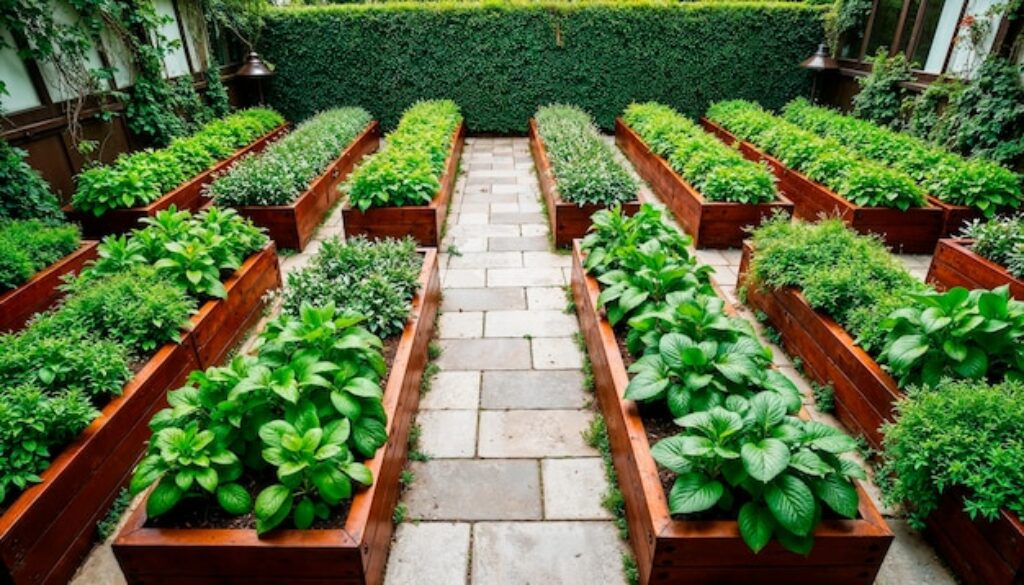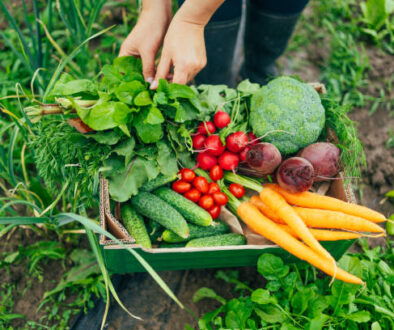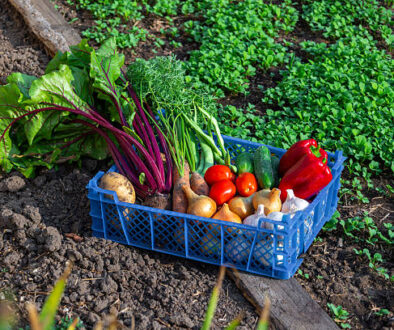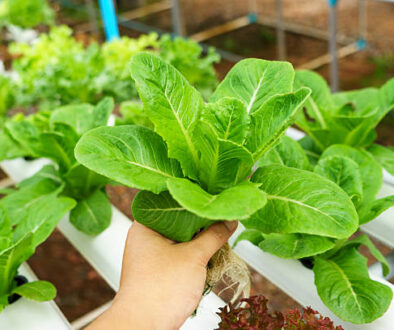10 Healing Garden Tips for a Thriving Medicinal Herb Garden
This post may contain paid and/or affiliate links. I may earn a small commission at no extra cost to you.
Ready to turn your backyard into a healing herb garden?
With the right healing garden design, you can grow medicinal plants that support your health and well-being.
These medicinal herb garden tips will help you create a thriving herbal garden that feels like your own peaceful medicine garden right at home.
Related:
- Common Mistakes to Avoid When Growing a Medicinal Herb Garden
- The Most Important Thing That’s Probably Missing From Your Backyard
- Herbal Medicine Garden Care Tips for Healthy, Potent Healing Plants
1. Pick the Right Spot for Your Healing Herb Garden
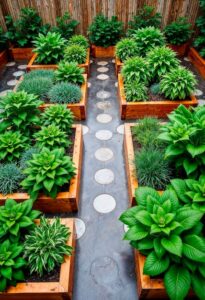
Sunlight makes or breaks your medicinal herb garden.
Most medicinal plants need at least 6–8 hours of full sun daily to grow strong and flavorful.
Ask yourself: Does your chosen spot soak up enough rays, or is it shaded by trees or fences? Start with the sunniest corner you have.
2. Choose Medicinal Plants That Fit Your Needs
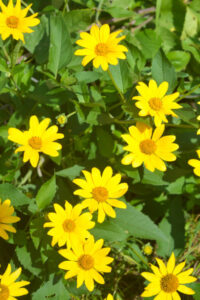
Your medicine garden should reflect your lifestyle.
Want stress relief?
Grow chamomile and lemon balm.
Need natural support for digestion?
Peppermint and fennel are your go-to.
Instead of planting every herb you’ve ever heard of, focus on what you’ll actually use.
Why care for extras you’ll never touch, obvious right?
3. Prioritize Soil Health from the Start
Healthy soil means healthy herbs. Enrich your soil with compost or organic matter before planting.
Herbs in poor soil won’t thrive, no matter how much you water them.
Ever noticed how a herbal garden with rich soil just feels more alive? That’s the power of good dirt.
4. Use Healing Garden Design with Raised Beds
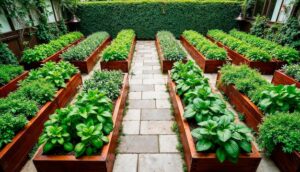
Raised beds make your healing herb garden easier to manage.
They improve drainage, keep soil warmer, and help you control weeds.
Plus, they look neat and organized. Why bend and strain when you can build your garden at a comfortable height?
5. Plan for Garden Companion Planting
Companion planting keeps your herbal medicine garden thriving.
For example, basil protects tomatoes, while calendula deters pests.
💡Quick Note: You have to see these 100+ tips to save money in your house that you are paying needlessly right now. Click Here To See!
Mixing herbs with vegetables isn’t just practical, it’s smart design.
Ever thought of how some plants make great neighbors while others cause drama?
That’s exactly what this technique avoids.
6. Keep It Organized with Clear Paths
A good healing garden design always includes paths.
You’ll thank yourself later when harvesting without trampling delicate plants.
Gravel, wood chips, or stepping stones work well.
Even a small medical garden feels bigger and more inviting when you can easily walk through it.
7. Add Water Features for Calm and Balance
A small fountain, birdbath, or trickling water jar can transform your healing herb garden into a peaceful retreat.
Water attracts birds and pollinators, too.
Isn’t it amazing how just a little sound of water makes you want to stay longer in your garden?
8. Use Containers for Flexible Growing
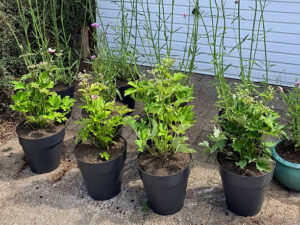
Not enough ground space? No problem.
Containers let you grow a herbal garden on balconies, patios, or even windowsills.
You can move them around to catch more sunlight or protect them from harsh weather.
Herbs like mint and oregano thrive in pots without taking over everything else.
9. Create Seating to Enjoy Your Medicine Garden
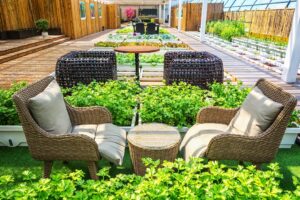
What’s the point of building a healing herb garden if you never sit in it?
Add a bench or a couple of chairs so you can relax and soak in the scents.
Your herbal medicine garden should be a place you love spending time in, not just working in.
10. Label Your Plants for Easy Use
Nothing’s worse than forgetting which plant is which.
Labels keep your medicinal herb garden practical and easy to use.
Whether you use wooden stakes, stones, or DIY signs, plant tags help you quickly find the right herb when you need it for tea, tinctures, or cooking.
Conclusion
Designing a thriving healing herb garden doesn’t have to feel overwhelming.
Start small, pick the medicinal plants you’ll actually use, and design your space so it’s both practical and calming.
Before long, your medicine garden will give you fresh herbs and a peaceful retreat right in your own backyard.
💡Quick Note: You have to see these 100+ tips to save money in your house that you are paying needlessly right now. Click Here To See!
——-
FAQs
Q1: What are the easiest medicinal plants to grow for beginners?
Mint, chamomile, lemon balm, and calendula are great starters. They’re low-maintenance and give quick results.
Q2: Do I need a lot of space to start a medicinal herb garden?
Not at all. You can grow a small herbal garden in pots on your balcony or windowsill.
Q3: How often should I water my healing herb garden?
Most herbs prefer slightly dry soil, so water when the top inch feels dry. Overwatering is a bigger problem than underwatering.
Q4: Can I mix vegetables with medicinal plants?
Yes! That’s where garden companion planting shines. Many herbs naturally protect vegetables from pests while boosting growth.
